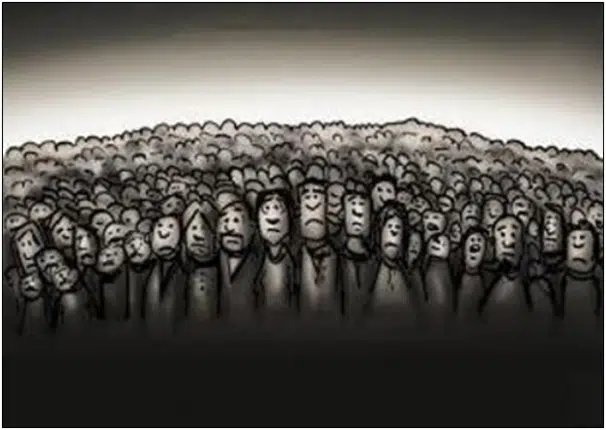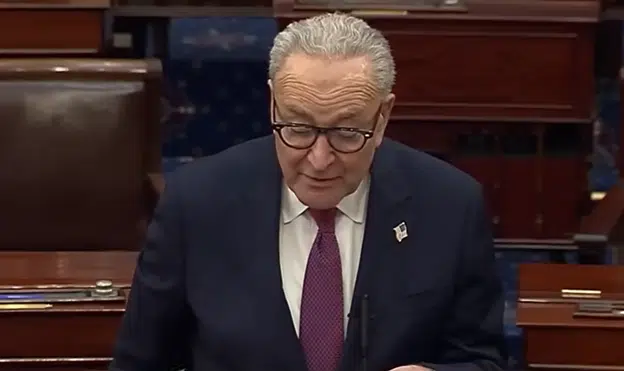
Producer prices dropped 0.4 percent in March, following consumer prices dropping 0.1 percent, according to the latest data from the Bureau of Labor Statistics, amid continued drops in food and energy prices, particularly on the producer side, which saw 2.1 percent and 4 percent drops, respectively.
These price drops came prior to President Donald Trump’s April announcements of reciprocal tariffs (now paused) and 10 percent tariffs globally except for China, which is currently seeing a 145 percent tariff. Since then, there have been further drops in commodities prices including oil that factor into producer prices. Light sweet crude oil has dropped from $72 a barrel down to $60 a barrel, a 16.6 percent drop.
All of which means inflation is falling — and appears poised to continue falling — in spite of repeated predictions by opponents of President Donald Trump’s tariffs of both parties that prices would rise in response to his tariffs on Canada, Mexico, China and the rest of the world.
It simply has not happened, with consumer inflation the past 12 months now at 2.4 percent and producer inflation at 2.7 percent. That’s coming off peak consumer inflation of 9.1 percent in June 2022 and producer inflation of 11.3 percent in June 2022. The trend is down and has been.
And it’s really not that surprising. The money supply has not increased since 2022, and energy production including oil has been rising following the Covid-led production lockdowns as the global supply crisis has eased.
Demand has also cooled as American households maxed out their credit, total consumer credit owned and securitized having declined by 1 percent the past 12 months, according to data compiled by the Federal Reserve.
Additionally, unemployment had already risen by more than 1 million before President Trump was even sworn into office. Arguably, unemployment has not moved too much because of the ongoing labor shortages with the ongoing Baby Boomer retirement wave, with more than 900,000 Americans over the age of 65 leaving the labor force every year and accelerating.
And, short-term market movements notwithstanding, the dollar has nominally strengthened 3.9 percent in the past 12 months. And so, the strong dollar usually accompanies commodities prices in producer prices taking a hit, which they have.
Interest rates overall are down since January, with 10-year treasuries moving from 4.8 percent down to about 4.5 percent now. 2-year treasuries are down from 4.4 percent at the beginning of the year to 3.9 percent now as of this writing. That shows inflation expectations are largely dropping.
Gold, after initially dropping after the April 2 announcement, has been rising, showing signs of being a safe haven as it did in 2009 and also in 2020 and 2021. During the heart of the financial crisis and the Covid economic lockdowns, inflation was not a going concern, but gold kept and increased value.
These are if anything recession signals historically — years in the making — that tend to happen at the end of economic cycles following peak inflation.
As it is, the effective federal funds rate set by the Federal Reserve, currently at 4.3 percent, has been above the consumer inflation rate now at 2.4 percent for about two years now. If inflation continues falling and unemployment continues rising, one should expect the Fed to begin ratcheting down interest rates like they do every time those two things happen at the end of the economic cycle.
It could be we already had the recession or are in one, but it hasn’t been booked yet or that there is still one on the horizon. Generally, rising unemployment, along with collapsing consumer credit, is what usually happens as inflation slows down along with demand after the economy overheats as it did in 2022.
Politically, inflation has been slowing, it just didn’t slow down fast enough to help Joe Biden and Kamala Harris in 2024, who had to run on a record of inflation outpacing incomes.
As for the short-term gyrations in U.S. bonds with rates rising the same time stocks were selling — a worrisome sign — are interest rates on U.S. bonds rising and the dollar weakening short term because of inflation? Let’s look overseas.
For example, since April 2, the Japanese yen to the dollar has appreciated by 6 percent as Japanese 10-year treasuries have dropped following President Trump’s announcement of tariffs. Similarly, the euro to the dollar has appreciated by 5.3 percent, with German 10-year treasuries dropping as well. These could indicate domestic flights to safety as the Japanese and European economies are set to take hits from the increased U.S. tariffs.
But generally, lower interest rates abroad indicate lower inflation expectations overseas, not higher. It also indicates lower growth expectations.
Domestically, as of April 9, the Atlanta Federal Reserve is projecting the U.S. Gross Domestic Product to decline in the first quarter by an annualized 2.4 percent. This is completely consistent with the lower inflation readings. This does not happen overnight. The Atlanta Fed has been projecting a negative first quarter since the end of February.
All of which could mean that the U.S. economy if anything should be getting on a recession footing. If U.S. bonds are having trouble, the Fed might have to step up its buyer of last resort status — it has been shedding treasuries to soak up inflation since 2022 by more than $1.5 trillion and mortgage-backed securities by more than $500 billion. If the Fed resumes bond buying, that will tell everyone a lot about the direction of prices. As usual, keep an eye on jobs and also rising energy and food production, but this could mean mission accomplished in terms of killing inflation. That’s good news.
Robert Romano is the Executive Director of Americans for Limited Government Foundation.






